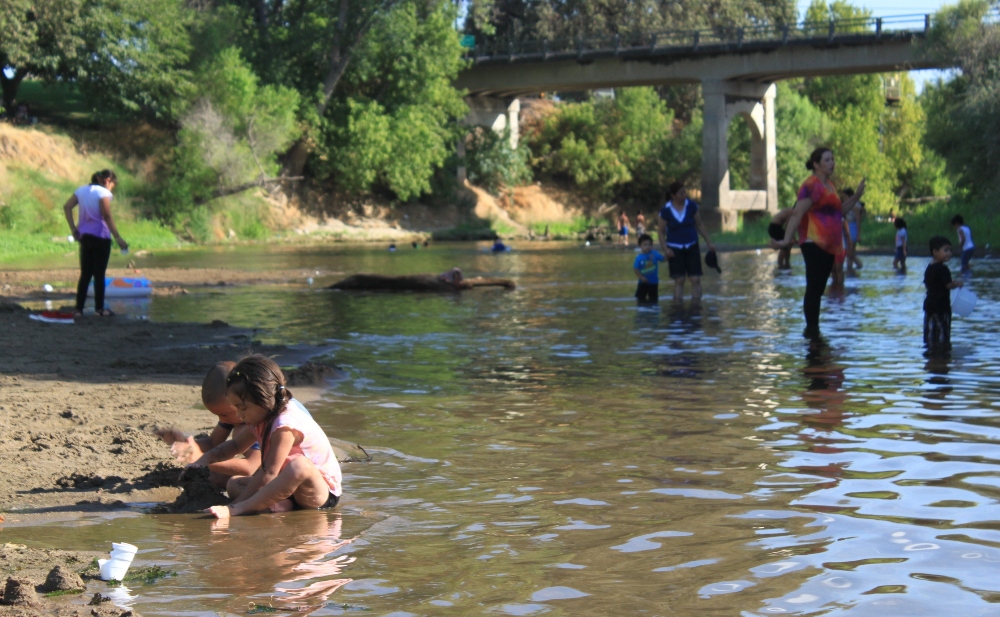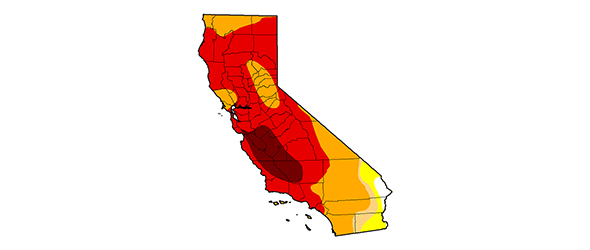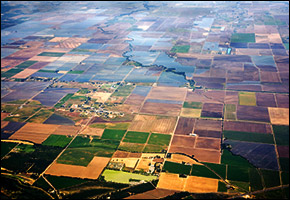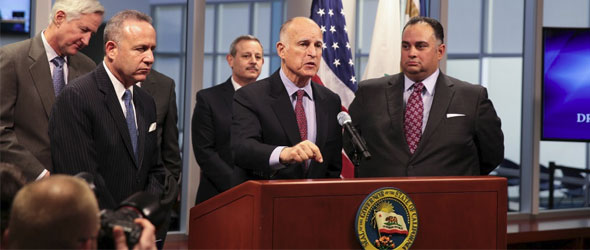California Governor’s Third Drought Order Sets New Water Rules, Requirements
As temperatures heat up and water supplies dwindle, Governor Jerry Brown’s third drought order deals with lawns, laws, and emergency response.

For the third time in less than a year, California Governor Jerry Brown is using executive power to address a drought of nearly unprecedented severity.
In a wide-ranging executive order released Friday afternoon, the governor took steps to facilitate the movement of water to where it is most needed. He also stepped up monitoring of the state’s streams and aquifers, while suspending some environmental requirements and asking for new regulations.
The key items in the 20-point order include:
- Quicker processing for voluntary water transfers. This proposal is an old one, part of the governor’s May 2013 executive order to speed up water markets. The goal is to move supplies between willing buyers and sellers faster, cutting processing time from months to weeks. Most transfers occur during the end of the irrigation season, between July and September.
- Mandatory plans from municipal water providers to limit outdoor water use. On January 17, the governor declared a state drought emergency and urged citizens to reduce water consumption by 20 percent. That was a voluntary call. Now, utilities must show what they are doing to reduce lawn watering and other outdoor uses, such as car washing. Plans are due June 15 to the state water board.
- A suspension of homeowners association rules requiring green lawns. The governor says that provisions that obstruct water conservation – such as the landscaping rules in upscale communities – are void and prohibited in this drought.
- New rules for reusing wastewater. The state water board is writing new regulations that will ensure a quicker and more consistent approval process for increasing the use of wastewater by cities and farmers.
The rules will be directed at expanding the use of recycled water from existing facilities, said Scott Couch, who is involved in writing the new requirements. Couch told Circle of Blue the board will be voting on the rules at its June meeting. In response to the January 17 drought declaration, the board released $US 800 million in low-interest loans for new recycled water facilities.
- Increased monitoring for streams and aquifers. The Department of Fish and Wildlife will keep an eye on salmon runs in the Sacramento River, while the Department of Water Resources (DWR) will scrutinize groundwater use. By November 30, DWR must report on the groundwater basins with water shortages. The report must also assess two other items: land subsidence, which happens when the ground sinks because too much water is pumped out, and farmland fallowing, the act of not planting a field.
- Reduce agriculture’s energy and water use. By July 1, the Department of Food and Agriculture must develop a plan for spending the $US 10 million in the governor’s drought package earmarked for these two areas. The drought package passed the legislature in February. The money will be used to install irrigation systems that apply less water to the crop. Funds will also patch leaky distribution systems.
- Suspension of certain environmental requirements. To quicken the removal of dead trees, property owners will not need to go through a public notice process. Similarly, environmental reviews required by state law are suspended for water transfers, agricultural water efficiency projects, emergency drinking water connections, and any relocation of threatened fish species. The suspension is in effect through December 31.
California, in its third consecutive abnormally dry year, ended the winter with its third-lowest Sierra Nevada snow reserves on record.
Conditions have not improved. Spring temperatures ranging from 2 degrees to 4 degrees Fahrenheit above normal zapped the snow fields, melting already more than half the meager reserves.
Brett writes about agriculture, energy, infrastructure, and the politics and economics of water in the United States. He also writes the Federal Water Tap, Circle of Blue’s weekly digest of U.S. government water news. He is the winner of two Society of Environmental Journalists reporting awards, one of the top honors in American environmental journalism: first place for explanatory reporting for a series on septic system pollution in the United States(2016) and third place for beat reporting in a small market (2014). He received the Sierra Club’s Distinguished Service Award in 2018. Brett lives in Seattle, where he hikes the mountains and bakes pies. Contact Brett Walton









Leave a Reply
Want to join the discussion?Feel free to contribute!